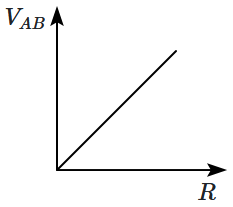All the resistances to the left of the vertical line \(PQ\) are \(1~\Omega\), while those on the right of line \(PQ\) are \(2~\Omega\) as shown in the figure above. The equivalent resistance between \(A\) and \(B\) is:

1.
\(18~\Omega\)
2.
\(9~\Omega\)
3.
\(4.5~\Omega\)
4.
\(2.25~\Omega\)

To unlock all the explanations of this course, you need to be enrolled.

To unlock all the explanations of this course, you need to be enrolled.
| Assertion (A): | In the Wheatstone Bridge shown in the figure, if the resistances in opposite arms are switched (i.e. \(Q, R \) are exchanged) then the bridge remains balanced if it was initially balanced. |
| Reason (R): | The balance condition \(\dfrac P Q\) = \(\dfrac R S\) is not affected if resistances in opposite arms are switched. |

| 1. | (A) is True but (R) is False. |
| 2. | (A) is False but (R) is True. |
| 3. | Both (A) and (R) are True and (R) is the correct explanation of (A). |
| 4. | Both (A) and (R) are True but (R) is not the correct explanation of (A). |

To unlock all the explanations of this course, you need to be enrolled.

To unlock all the explanations of this course, you need to be enrolled.

1. \(5~\Omega\)
2. \(4~\Omega\)
3. \(2~\Omega\)
4. \(8~\Omega\)

To unlock all the explanations of this course, you need to be enrolled.

To unlock all the explanations of this course, you need to be enrolled.

| 1. | \(\dfrac{E_{1}}{R}\) | 2. | \(\dfrac{E_{2}}{R}\) |
| 3. | \(\dfrac{E_1 - E_2}{R}\) | 4. | \(\dfrac{E_1 - E_2}{2R}\) |

To unlock all the explanations of this course, you need to be enrolled.

To unlock all the explanations of this course, you need to be enrolled.
| 1. | \(150^{\circ}\text{C}\) | 2. | \(50^{\circ}\text{C}\) |
| 3. | \(450^{\circ}\text{C}\) | 4. | \(25^{\circ}\text{C}\) |

To unlock all the explanations of this course, you need to be enrolled.

To unlock all the explanations of this course, you need to be enrolled.

| 1. | \(1.5~\text{V}\) | 2. | \(-1.5~\text{V}\) |
| 3. | \(1.2~\text{V}\) | 4. | \(-1.2~\text{V}\) |

To unlock all the explanations of this course, you need to be enrolled.

To unlock all the explanations of this course, you need to be enrolled.

| 1. | equals \(400~\Omega.\) |
| 2. | equals \(200~\Omega.\) |
| 3. | can have any value less than \(400~\Omega.\) |
| 4. | cannot be determined from the given information. |

To unlock all the explanations of this course, you need to be enrolled.

To unlock all the explanations of this course, you need to be enrolled.

| 1. | \(V=2\) volts, positive at \(A.\) |
| 2. | \(V=2\) volts, negative at \(A.\) |
| 3. | \(V=6\) volts, positive at \(A.\) |
| 4. | \(V=6\) volts, negative at \(A.\) |

To unlock all the explanations of this course, you need to be enrolled.

To unlock all the explanations of this course, you need to be enrolled.

| 1. | \(4~\Omega\) | 2. | \(2~\Omega\) |
| 3. | \(\dfrac43~\Omega\) | 4. | \(\dfrac{10}3~\Omega\) |

To unlock all the explanations of this course, you need to be enrolled.

To unlock all the explanations of this course, you need to be enrolled.

| 1. |  |
2. |  |
| 3. |  |
4. |  |

To unlock all the explanations of this course, you need to be enrolled.

To unlock all the explanations of this course, you need to be enrolled.






